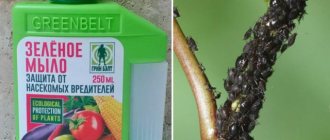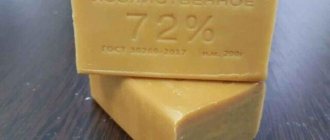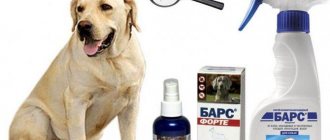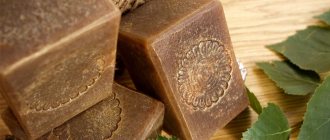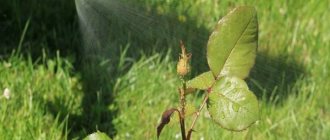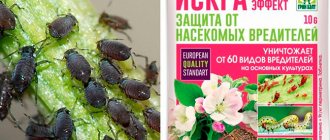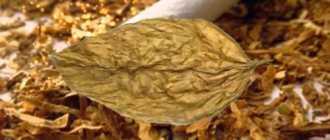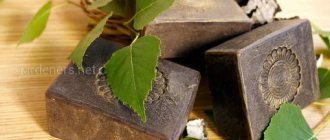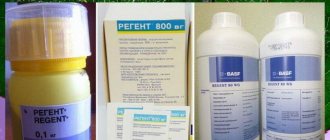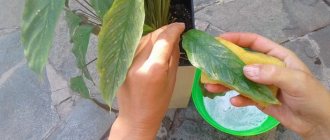Scorching is a high-temperature treatment of the surface of pig carcasses and poultry carcasses with combustion products of oil, kerosene or natural gas in order to remove epidermis, remaining bristles, feathers and fluff. Singing is also used when processing wool by-products. The temperature of the gas mixture during scorching is 1000..1100°C, the duration of the process is 15..20 s.
For scorching pig carcasses in small enterprises and for scorching the abdominal part of the carcass when removing the croup, torch burners running on kerosene or natural gas are used. At enterprises with higher productivity, scorch furnaces are used.
In a FFG flare burner
(Fig. 9.1) kerosene is burned, which through hose
14
through nipple
15
enters filter
16
of handle
17
and then into the opening of the housing
4.
Kerosene is mixed in nozzle 7 with air, the flow of which is regulated by valve
11.
is supplied
through the conical cavity
8 into combustion chamber 9,
in the cylindrical part of which 60 holes with a diameter of 3 mm are drilled.
The flow of the combustible mixture in the combustion chamber is regulated by a needle 3
, which is screwed into the housing
4
and sealed with an asbestos oil-gasoline-resistant seal
18
and a union nut
2.
The burner weight is 8 kg. The mass flow rate of kerosene at a pressure of 0.2 MPa reaches 18 kg/h.
Rice. 9.1. FFG flare burner: 1
— handwheel;
2
- union nut;
3 - needle; 4
— body;
5 - ring; 6
— nozzles;
7 - nozzle; 8
- conical cavity;
9 - combustion chamber; 10
- fitting;
11
- valve;
12, 15
— nipples;
13, 14
— hoses;
16
- filter;
17
— handle;
18
— needle seal;
19
— bushing
Scorch furnace K7-FO2-E
type is intended for complete scorching of pig carcasses and carcasses with the croup removed.
The furnace chamber consists of a frame 16
(Fig. 9.2), on which hollow side panels
1 are installed,
connected at the top by an exhaust hood
2.
Between the two halves of the hood, outside the chamber there is a suspension rail
5
, to which a cooling pipe
4 is welded,
and inside the chamber — guide
3
, made of pipe.
in pipes 4
and 3 for cooling.
For scorching, natural gas is burned in four burners 8
.
15
vertical riser pipes on which 20 injection burners are attached.
Gas from the network (Fig. 9.2, b)
enters through the wedge valve
10
and the regulating membrane solenoid valve
13
into the manifold
8.
Next, the gas through four pipes equipped with plug valves
14
enters the risers
2, 6, 15
and
16
of the burner devices.
The igniter 12
is connected directly to the inlet gas pipeline through the plug valve
11.
Thus, the device allows automated and manual regulation of gas flow.
For cooling side shields 1
air passes through their internal cavities, which is then discharged through the exhaust hood
5
into the pipe.
Combustion products are also discharged there. Cooling water, heated in the pipes of rail 4
and guide 3, is used to irrigate the carcasses after scorching.
The productivity of the K7-FO2-E oven reaches 240 carcasses per 1 hour with a process duration of 15 seconds. The stove runs on natural and liquefied gas. The volumetric consumption of natural gas at full scorch is 130 m 3 /h, liquefied gas - 25 m 3 /h. The weight of the device is 2000 kg.
When working from scorch furnaces, gases with a temperature of 700-900 ° C, the heat of which are advisable to utilize. Utilization of waste gas heat is provided in the scorch furnace
(Finland), which consists of frame
1
(Fig. 9.3.), covered with shields 3 and 10. Four risers
9
with gas burners
4 are fixed to the frame,
a gas-air mixture is supplied
through pipes 6 and
8 The furnace operates in pulse mode, so a continuously burning igniter 2
. When entering the furnace, the carcass touches the travel microswitch, as a result of which the gas network shut-off valve circuit is closed.
Rice. 9.2. Scorch furnace K7-FO2-E of pass-through type:
A
— general view:
1
— side shield;
2
— exhaust hood;
3 - guide; 4
- cooling pipe;
5 — suspended track rail; 6
- frame;
7 — gas supply pipe to the igniter; 8
— burner device;
9
- gas pipeline;
10
- pressure gauges;
11
- wedge valve;
12
- collector;
13
- plug valve;
14
— gas supply pipe to the burner device;
15
— riser pipes;
16
- frame;
b
- pneumatic diagram:
1
- side shield;
2, 16
— left risers;
3
- guide;
4
— suspended track rail;
5
- umbrella;
6, 15
— right risers;
7.9
- pressure gauges;
8
- collector;
10
- wedge valve;
11, 14
— plug valves;
12
— igniter;
13
- membrane solenoid valve.
Why do you need to scorch?
It is necessary to singe a pig correctly, first of all, to rid the skin of bristles. In addition, cleaning often precedes smoking and affects the quality of the lard. If the pig is slaughtered for sale, it is necessary to singe it to give it a marketable appearance.
The choice of bristle removal partially affects the quality of the lard. If you tar a pig, the lard acquires a specific taste. It is usually advised to smoke and salt the carcass immediately after it has been seared.
Theoretically, a young piglet can be left with bristles, and during cooking you can simply remove the skin. However, this will prevent you from using the pigskin. The bristly material is not suitable for dressing and processing, and it is almost impossible to get rid of hair on a skin that has already cooled down.
Green soap: description and composition of the product
The soap is a soft dark brown or greenish mass with a faint soapy odor. The substance dissolves easily in both water and alcohol-containing liquids. The aqueous solution is slightly turbid, foamy and alkaline.
The composition is represented by animal fats, potassium salts of fatty acids, natural vegetable oils and water. Manufacturers most often prefer to use solid fats from cattle or sheep as animal fats. Soybean and sunflower oils are used in the form of vegetable oils.
Stubble removal methods
If you decide to use leather, you need to choose how to remove the stubble. The most convenient and accessible method is chosen. It is recommended to get rid of stubble using one of 4 methods:
- straw, wood chips;
- gas burner;
- blowtorch;
- scalding.
Each method has its own disadvantages and advantages. However, in each case it is necessary to be careful and pay attention to the process. This plays a decisive role. It is important not to dry out the skin using fire and not to cook the carcass by removing the bristles with water.
There are alternative methods - cleaning the hide with chemicals. However, it is not recommended to do this at home. In addition, it is worth remembering the harmfulness of such methods.
Singing a pig is not enough. It is necessary to scrape off soot and burnt bristles. Usually a scraper, a knife, or a blade are used. Alternative methods - a hard brush and sandpaper are not effective enough; after the process, most of the bristles and soot remain.
Pros of polyurethane foam beehives
Unlike hives made of wood, polyurethane foam ones have many advantages:
- The low coefficient of thermal conductivity ensures that the temperature inside the hive is uniform and optimal for the bees.
- Not subject to deformation under the influence of weather and climatic factors.
- They have low hygroscopicity and high moisture resistance.
- Not susceptible to rotting and mold.
- High durability
- A light weight
- Environmental friendliness
Polyurethane foam hives do not need to be insulated; they are not of interest to pests, insects and rodents, since the outer surfaces are protected by an integral crust. The moisture accumulated inside does not evaporate through the pores, as happens in hives made of wood, but simply flows out. Air exchange is carried out through a special mesh installed in the pan. The air from it, heating up, passes through the entire hive to the lid, and after the temperature drops, it descends again and exits into the surrounding space. Condensation, the formation of which is inevitable at a sufficiently low air temperature, is removed by gravity through the same pan mesh.
How to properly singe a pig with a gas torch
It is convenient to singe a pig with a gas burner because you can efficiently clean hard-to-reach places. An additional advantage is that you can make a gas burner for scorching pig carcasses yourself. Tarring should be done according to this scheme:
- The carcass is placed on a raised platform, preferably on its back, legs spread apart.
- Turn on the gas burner and gradually singe the skin.
- It is recommended to repeat the procedure 2 times - scorch, scrape, repeat again.
- During the process, make sure that the skin does not dry out. Bubbles of fat indicate the degree of readiness.
A gas torch for singeing pigs is safer than a blowtorch. The burner does not have the property of heating up. The disadvantage of this method is that it simply dries out the skin and singes the skin in addition to the bristles. You can ruin the top layer of lard.
Drinkers for nutria
At the initial stage of nutria breeding, many breeders buy ready-made feeders and drinkers for them in the store. But the presented models do not always meet the requirements for such products. Therefore, the best option is to assemble the structures yourself. In this case, the drinking bowl will ideally fit the parameters of the cage, and will also provide the animal with constant access to water.
How to make a gas burner for processing pigs
Not having a tool at home is a reason to make the device yourself. You can make a burner for singeing pigs with your own hands. The design includes the following elements:
- body (metal);
- nozzle;
- gearbox;
- a unit for attaching a gas cylinder;
- regulator to control fuel supply;
- gas hose;
- lever;
- flame blow-out safety device;
- head.
Detailed manufacturing instructions are demonstrated in numerous videos. Create a gas burner for pigs with your own hands according to the following scheme.
- First, the handle is made. It is acceptable to use an old soldering iron handle or unnecessary pipes. The handle should remain cold.
- Create a steel body. It is permissible to use a brass rod with a diameter of 2 cm.
- The divider is made from the same rod, with 4 holes for oxygen circulation. The lack of oxygen will make combustion impossible.
- The divider is pressed forcefully into the body. It is necessary to install an internal flange with clearance.
- They make a nozzle. A metal rod is used for this. A drill with a diameter of 2 mm makes a blind hole. A 4 mm hole is made in the jumper. They are hammered and sharpened with sandpaper.
- A gear hose (rubber or fabric) is attached to the end of the tube and secured with a clamp or screwdriver. The hose is taken from specialized materials; using improvised materials is risky.
- Then the optimal pressure in the connected gas cylinder is set.
Who are the Pereaters?
The cause may be mallophagosis, a parasitic infection. It is caused by feather eaters, almost invisible to the human eye; they are popularly called feather eaters or chicken lice.
Description of the insect
The beetle is a tiny parasite that looks like a yellow-brown louse. Slightly elongated body about 3 mm long and 0.3 mm wide.
On the lower part of the head there is a gnawing mouthparts. On the chest there are 6 legs with claws, with which the insect clings to the feathers and moves along them.
The insect feeds on feathers, down, and particles of dead epidermis.
It reproduces actively at plus 25-30 degrees and humidity of about 80 percent. The female attaches eggs to the feathers. After 14-20 days the process is repeated. An individual lays about 120 thousand eggs during its life.
Development from egg to adult is 3-4 weeks. During this time, there are 3 stages of molting.
An adult feather eater lives on the body of a bird for about a month, in the external environment - from 2 to 6 days.
Expert opinion
Firsov Sergey Arkadevich
Poultry farmer
There can be about 10 thousand chicken lice on a bird's body.
How to singe a pig or pig with straw
Singing a pig with straw is considered a crude but simple method to treat the carcass. Some recommend using this method only when preparing a carcass for yourself, and tarring piglets for sale using other methods.
- The carcass is placed on the ground. A heat-resistant table is suitable, but the ground is more convenient; removing ashes and scraping stubble will be more convenient in an unlimited space.
- Cover the side with straw and set it on fire. You should watch the combustion. Strong flames should be put out with burlap.
- The ashes from the burnt straw are removed along with the burnt bristles. It is advisable to use additional tools.
- Turn the carcass over and repeat the steps. It is important to place the straw evenly on both sides of the pig.
Properly singeing a pig with straw is quite simple. If necessary, straw is replaced with thin aspen chips. Scorching a pig with wood chips is faster than scorching with straw due to the high temperature of the fire. Soot and bristles should be scraped off carefully using a scraper. Some people recommend scrubbing with a stiff brush, but this method is ineffective.
How to tar a pig or pig with a blowtorch
The blowtorch method is similar to the gas torch method. The difference is that the pig will be processed using propane.
- The pig carcass is placed on the table for convenience. It is more convenient to leave a large pig on the ground.
- Turn on the blowtorch. It is advisable to adjust the temperature before scorching the pig.
- Carefully singe the bristles, including in hard-to-reach places. Scorching will take time, you should take into account the necessary breaks, it will take longer than cleaning a pig with a gas torch.
- The carcass is turned over as needed. The ears, head, and tail are treated especially carefully.
- Some people advise doing tarring twice, cleansing the skin as thoroughly as possible.
It must be remembered that the blowtorch gets hot. You will need to take breaks from working; some blowtorches explode due to overheating. The process will take longer than if you scorch with straw or a gas burner. The advantage of a blowtorch is the ability to process the pig more thoroughly than with other methods.
It is advisable to scrape the skin with a blade, scraper, or knife. But it is important to remember that the skin should not be damaged. You should not overdry the skin; you should also not singe it to the point of charring the skin.
How to singe a pig to add flavor
After removing the bristles, it is recommended to do an additional roasting, which gives the lard and meat a specific aroma.
- The carcass, devoid of bristles, is burned until it turns black. The back and legs are treated longer than the skin of the abdomen.
- Pour water over the skin, making it softer and more elastic. Firing makes the skin fragile, hard, brittle.
- Turn the carcass over and repeat the procedure. The pig should be evenly burned, otherwise the aroma and taste will be different in different pieces.
- The hooves are removed by heating with a burner flame. Remove using gloves to prevent burns.
The result is aromatic lard, meat ready for smoking and salting. It is permissible to freeze raw materials, make minced meat, and use them at your own discretion.
Improved Wool Scraping Machine
DOI: 10.32743/UniTech.2021.83.2-2.57-60
ANNOTATION
The article analyzes the process of wool ruffling. The disadvantages of the 2BT-150-Sh scutching machine used in the process of loosening wool are described. For effective loosening of wool raw materials, an improved scutching machine has been proposed. The results of an experimental study of wool fraying on basic and improved machines are presented.
ABSTRACT
The article analyzes the process of ruffling of wool. The disadvantages of the scutching machine 2BT-150-Sh, used in the process of loosening wool, are described. For effective loosening of woolen raw materials, an improved scutching machine is proposed. The results of an experimental study of wool ruffling on the basic and advanced machines are presented.
Key words : wool, scuffing, loosening, drum.
Keywords: wool, ruffle, loosening, drum.
Introduction. A number of comprehensive measures are being implemented in Uzbekistan to restore and develop karakul farming and wool processing through the creation of new modern enterprises [1].
The process of primary processing of wool includes acceptance by quantity and quality, sorting, scattering (cleaning) and washing.
The purpose of scuffing wool is to loosen it, separate large shreds into small ones, remove dust from the wool and clean it from impurities. When loosening, favorable conditions are created for mixing the fibers, the forces acting on the needles and fiber during the carding process are reduced, due to which the fibers break less and the service life of the set of working parts of carding machines increases. Loosening of wool is carried out on scattering machines and loosening-scraping units [2,3].
Analysis of the design an existing wool scattering machine. The 2BT-150-Sh double-drum scattering machine is widely used in industry (Fig. 1).
This scattering machine has a number of technological disadvantages:
— uneven nutrition of the wool during ruffling:
- during scuffing, the wool is pulled back by the pegging drums along the surface of the grate, leading to deterioration and loss of fiber mass.
— raw materials (mass of wool), thrown onto conveyor belt 1, are fed to feed roller 2 without pre-processing, i.e. The scattered lumps of fiber have different thicknesses, the fibers are chaotically mixed together, which greatly complicates processability on the working parts of the machine. If you look at the trajectory of the mass of fibers between the feed rollers, you can see that the first pegging drum 4 captures a large, unprocessed mass of wool fibers, which are very difficult to pass between the pegging drum and the grates.
Picture 1 . Shooting machine 2BT-150-Sh
1-conveyor, 2-feed roller, 3-spring, 4.8-peg drums, 5-perforated mesh, 6-pipe, 7-movable pegs, 9-body, 10-visor, 11-outlet, 12-grid lattice, 13- hopper, 14- rack, 15- conveyor.
Improved scattering machine . To increase the degree of loosening of wool, increase the degree of parallelization of fibers and increase the cleaning effect, an improved scattering machine has been developed (Fig. 2).
The improved scattering machine includes: pairs of corrugated rollers 1, 2; feeding table 3; corrugated roller 4; peg drums 5, 7, grates 8,12; removable roller 9; cut-offs 10, 11; 12 perforated mesh 12; feeder 14; plate 15; outlet pipe 16, curved pointed pin 13. The autofeeder spreads unwashed wool onto feeder 14 in an even layer. This layer of wool is then fed onto pairs of grooved rollers to reduce the thickness of the wool layer. To do this, the layer is clamped by the first exhaust corrugated pair 1, rotating towards each other at a speed V and then the layer goes to the same second exhaust pair 2, rotating at a speed V1 greater than the speed V. Due to this difference, the fibers in the wool layer are clamped the second exhaust pair rotating at a speed V1 greater than the speed V of the first exhaust pair, acquiring speed V1 and are partially drawn out of the layer.
Figure 2. Improved scattering machine
This stretching causes the wool layer to become thinner. The drawing process leads to partial parallelization of the wool fibers in the layer. Partial parallelization occurs due to the movement of fibers relative to each other (in the wool layer the fibers are in a chaotic state). To carry out the process of drawing fibers, the distance between pairs of corrugated rollers must be greater than the length of the wool fibers (with a smaller distance, fiber breakage will occur). To ensure that the fibers do not fall down between the exhaust pairs, the layer of fibers passes along the supporting plate 15. After the second exhaust pair, the layer of wool fibers enters the feed table 3 and when the layer moves towards the peg drum 5, the layer of fibers is clamped by the exhaust roller rotating with speed V2 greater than the speed V1 of the previous pair of rollers. In the area between rollers 2 and 3, the pulling process is also carried out, and leads to an even greater reduction in the thickness of the layer and the parallelization of wool fibers in it. Next, the peg 13 of the peg drum 5 captures a bundle of fibers from a layer of wool, clamped on the feeding table 3, and drags it along the grates in the grate 6, where from this bundle due to the impact process on the grates. When such bundles are shaken off, even greater disaggregation of the fiber bundles occurs and debris is shaken out of them. Next, these bundles of fibers, held by pegs 13 of drum 5, must come off the pegs due to centrifugal force if the rows of grate bars run out. To prevent such a negative phenomenon, a cutter 11 is installed between the first 5 and second 7 tuning drums in their lower side part. Bundles of fibers moving further upward are removed from the pegs of the tuning drum 5 by a removable roller 9 (its blades or brushes) and transferred to the next tuning drum drum 7, where the process of scuffling bundles of wool fibers is repeated. The upper cutter 10 is intended for the same purpose as the lower one 11, and also protects from going to waste that part of the fiber bundles that could not transfer to the pegging drum 7. Such bundles are returned by a removable roller 9 for re-cleaning. After the process of weaving the fibers is completed, they are thrown off the pegs of the drum 7 and go into the outlet pipe 16.
Achieving a reduced thickness of the layer of wool fibers in corrugated rollers, forced transfer of processed material from one drum to another, increases the parallelization of fibers and the degree of purification of wool from foreign impurities [4, 5, 6].
Experimental part. The effectiveness of scuffing is assessed by the degree of wool loosening, reduction in the mass of shreds, losses when cleaning wool from impurities and the degree of fiber shortening [7].
To determine these indicators, comparative experimental studies were carried out using the methodology developed in [7]. The results obtained are shown in Table 1.
Table 1.
Indicators for assessing the effectiveness of scuffing
| № | Indicators | Basic car | Improved machine |
| 1 | Degree of loosening, % | 65 | 77 |
| 2 | Wool loss during cleaning of impurities, % | 4,0 | 3,1 |
| 3 | Degree of purification from plant impurities, % | 13 | 21 |
| 4 | Degree of fiber length shortening, % | 0,9 | 0,7 |
Conclusion
Analysis of the results obtained shows that, compared with the basic machine, in the improved machine the degree of loosening is 12% and the degree of purification from plant impurities is 8% higher, and the loss of wool during cleaning from impurities is 0.9% and the degree of shortening of the fiber length is 0.9%. 0.2% less than in the base car. This leads to an improvement in the technological process at subsequent technological transitions.
Bibliography:
- Decree of the President of the Republic of Uzbekistan. No. UP-6059 02.09.2020 “On measures for the further development of sericulture and karakul farming in the Republic of Uzbekistan”
- Ya.Ya. Lipenkov Spinning wool Moscow “Light Industry” 1979.
- Gorbunova LS, Rogachev NV, Vasilyeva LG, Koldaev VM “Primary processing of wool” book “EASY AND FOOD INDUSTRY” book Moscow 1981 y.
- F. Ismoyilov, Sh. Khakimov, M. Khodjayeva Loosening wool machines International Journal of Recent Technology and Engineering.- India, Volume-8 Issue-4, November 2022. – pp. 3650-3655.
- Khakimov SH.SH, Ismoyilov FB Analysis of the properties of raw wool materials obtained in Uzbekistan // “International Journal of Advanced Research in Science, Engineering and Technology. International Journal of Science. Vol. 6, Issue 6, June 2019”
- Khakimov SH.SH, Ismoyilov FB Analysis of the properties of raw wool materials obtained in Uzbekistan // “International Journal of Advanced Research in Science, Engineering and Technology. International Journal of Science. Vol. 6, Issue 6, June 2019”
- Pechnikova A.G. Improving technology and equipment for processing waste from wool production. Dissertation for Ph.D. Ivanovo 2004
Removing stubble using scalding method
Removing piglet bristles by scalding is only possible on freshly killed animals. If singeing can be carried out at any time while the pig is still warm, then scalding must be started immediately.
- Prepare a vat of hot, not boiling water. The volume depends on the size of the pig.
- The carcass is lowered using ropes.
- The piglet is constantly turned with a rope attached. The entire skin should be soaked evenly.
- After waiting for the skin to soften (the bristles should come off easily), the carcass is removed.
- Scrape off the bristles with a scraper or blade. Tools should be kept sharp, free of rust and damage.
- Places where separation is poor are watered with hot water several times as needed. It is prohibited to use boiling water.
The scalding method is often used when the carcass is not planned to be salted or smoked in the future.
Important rules for catching small rodents
- Check the live trap in the morning and evening. Some small mammals can starve to death in a very short period of time.
- Make sure your live trap has enough food and bedding material. Every time you check a trap. Each time you check the trap, change the food and bedding if it is damp.
- Remember to wash your hands after checking traps and handling animals.
- Once observation is complete, collect all traps. Make sure the number of traps collected matches the number of traps set.
